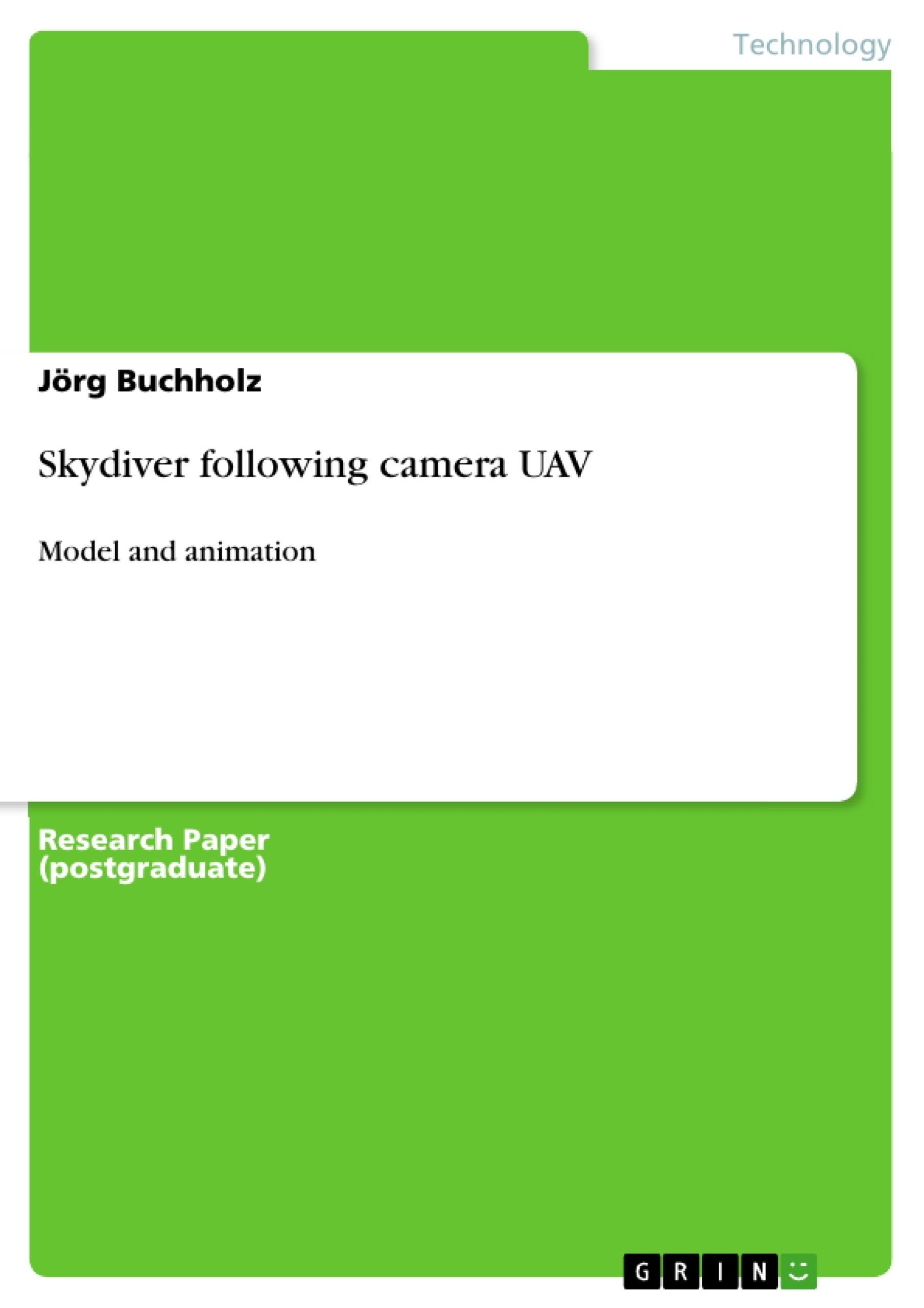The purpose of the UAV is provided in:
D. How, B. Barbarich-Bacher, and K. Stol, “Design and Analysis of a UAV for Skydiving.” IEEE Int. Conf. on Unmanned Aircraft Systems (ICUAS’15), 2015.
Inhaltsverzeichnis (Table of Contents)
- Simulink model
- General overview
- UAV wind + track
- UAV overview
- Actuator dynamics
- Aerodynamics
- Aerodynamic velocities
- Aerodynamic force unit
- Body
- Vanes
- Shadowing factor of the aerodynamic vanes
- Kinetics
- Translational velocity differential equation
- Position differential equation
- Rotational velocity differential equation
- Attitude differential equation
- Wind
- Translational wind
- Turbulence
- Rotational wind
- Track
- Attitude and altitude controller
- Position controller
- Position command
- 2-norm of a vector
- Rotation about x-axis
- Transformation from inertial frame to body-fixed frame
- Transformation from Euler frame to body-fixed frame
- Euler frame to body frame transformation matrix
- Displays
- Diver
- Real-Time Pacer
- sky diver_dat.m
- Animation
- Animation overview
- sd_sfun.m
- setup
- start
- Figure and Axes
- Hull of the UAV
- Vanes
- Hull display
- x-axis line
- Field of view
- Skydiver
- Video
- Communication structure
- revolve.m
- update
- Hull
- Vanes
- x-axis line
- Skydiver
- Camera
- Field of view (FOV)
- Visibility
- Video
- fov_test.m
- terminate
- vane rotate
- Roll
- Yaw
- m fg
- rotation_about_arbitrary_axis
- Skydiver model
- Skydiver flight data
- sky diver_dat.m
- trimmod
- Documentation
- Syntax
- Description
- Arguments
- Example
- Menu
- Algorithm
- Trimmod overview for UAV and skydiver
- Documentation
Zielsetzung und Themenschwerpunkte (Objectives and Key Themes)
This work presents a Simulink model and animation of a skydiver being followed by a camera UAV. The model simulates the dynamics of both the UAV and the skydiver, including their aerodynamic behavior, kinematics, and control systems. The aim is to provide a comprehensive tool for understanding and analyzing the complex interaction between the skydiver and the UAV during a skydiving scenario.
- UAV dynamics and control
- Skydiver kinematics and aerodynamics
- Simulation of the interaction between UAV and skydiver
- Camera tracking and field of view
- Real-time animation and visualization
Zusammenfassung der Kapitel (Chapter Summaries)
The work begins with a detailed description of the Simulink model, covering its general overview, the wind and track components, the UAV's dynamics, aerodynamics, and control systems. Chapter 2 focuses on the animation process, including the setup, start, and update functions for the simulation. It also explains the model's communication structure and the camera's field of view. Finally, Chapter 3 discusses the skydiver flight data and how it is generated and used in the simulation.
Schlüsselwörter (Keywords)
This paper explores the interplay of UAV dynamics, skydiver aerodynamics, camera tracking, and real-time animation. It utilizes Simulink modeling and MATLAB animation techniques to provide a comprehensive understanding of the complex interaction between a UAV and a skydiver during a skydiving scenario.
- Citation du texte
- Prof. Dr.-Ing. Jörg Buchholz (Auteur), 2017, Skydiver following camera UAV, Munich, GRIN Verlag, https://www.grin.com/document/366451



